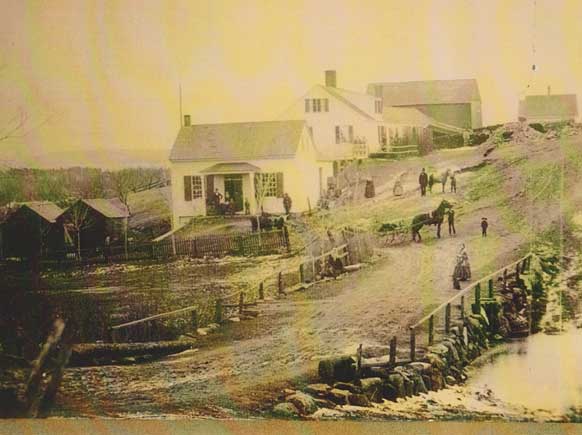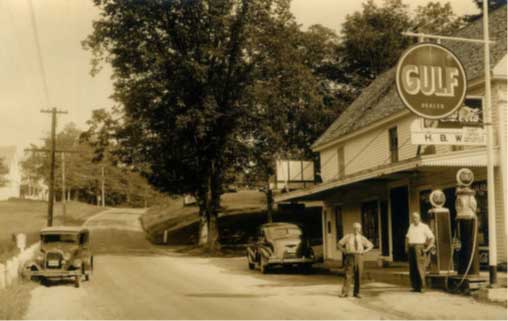Sargentville Center Businesses (BUS.1)
Businesses in the Center of Sargentville Village
The first businesses in Sargentville village, then still called Sedgwick, were the general store of Wyer G. Sargent which, initially, was in the lower part of his cellar and later in the white building in this photo, and the grist mill on the brook below. The store in this photo, called the “Iron Store,” was moved when Wyer’s new store was built at the bottom of the hill. The house above it, built in 1837 and expanded to three stories in 1868, was originally Wyer’s home and is now the home of Ann and David Conaway.
It appears that in the early 1800s there also was a grist mill owned by Enoch Briggs at the upper end of the mill pond, though there is scant record of its existence.
The story told is that the name Sargentville was given to this section of Sedgwick when a post office opened in 1855 with George M. Sargent as the first postmaster. Given that so many prominent Sargents lived in this small, self-sufficient community, it was suggested that the post office be named Sargentville-and so it was. The post office has now closed but the area is still called Sargentville and it still has its own zip code!
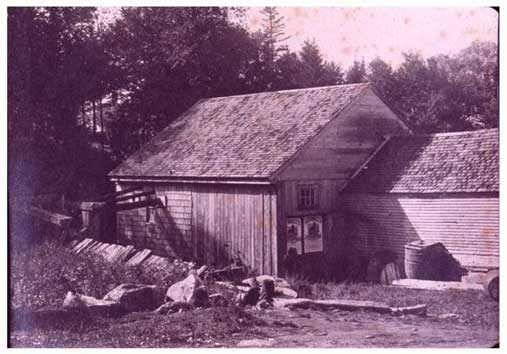
This is the grist mill which probably was built by an Eaton on the brook behind the Sargent store and near the start of Shore Road.
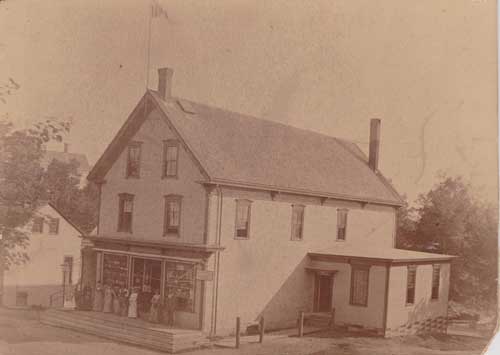
In this circa 1880 photo Wyer, with the white beard, can be seen on the right in front of the “new” Wyer G. Sargent and Son store. The post office is in the small building on the right.
Notes from the 1874 journal of Wyer G. Sargent describe construction of the “new Store” that was to replace the “old” store that stood at the foot of his lawn just across Shore Road.
1847
April 2 Went to Ellsworth, bought lumber of Hopkins for store building.
May 19 Got up lumber for store. Payson Haskill (sic) came to work on store.
May 23 Telegraph poles set at Sargentville
June 8 Put the sills on the foundation and part of the flooring on.
June 11 Raised second story of store.
June 18 Telegraph wire strung to store and ferry. Finished putting up the rafters and commenced to board the roof.
June 21 Got the stages up under the eaves.
June 22 Commenced to shingle the store.
June 23 The telegraph cable to Deer Isle laid this morning by Mr. Brown.
June 24 Got the store shingled.
June 26 Got first telegram from Ellsworth
June 25 Men worked getting in dirt.
Sept 29 Mr. Ware cementing the cellar. Putting up counters in store.
Oct 3 Got up molasses, flour, oil etc. put them into the cellar of the new store. Sold the old store to Thomas Pervear for $250 reserving the counters, drawers and shelves more than one inch thick, to be paid for in one, two and three years.
Oct. 6 Sold a barrel of flour from new store, first sold from it. Counters about completed today.
Oct 7 Got up the furnace in cellar.
Oct 20 Mr. Harold got through in the store.
Oct. 27 Have this day finally vacated the “old” store and commenced operations in the “new” store and feel gratified with the change. May we have the wisdom and grace given us to transact our business at all times and in all its departments with integrity and honesty of purpose in all things and this help we ask of our Heavenly Father for his Son’s sake.
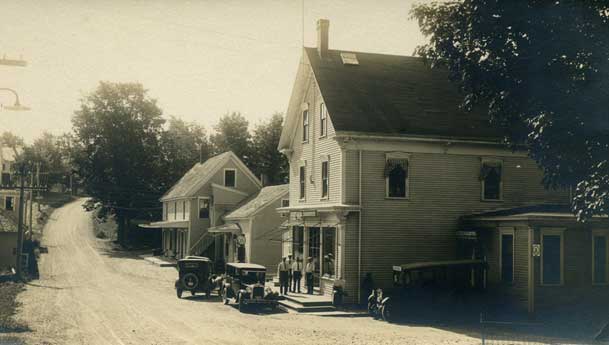
To the right of the Wyer G. Sargent and Son building was the Post Office and on the left, barely visible, was a Customs Office. The next smaller building was Wyer’s original store, the “iron store”, which had been moved from the foot of his property just across Shore Road. The next, and last, building housed the Brook Haven Tea Room.
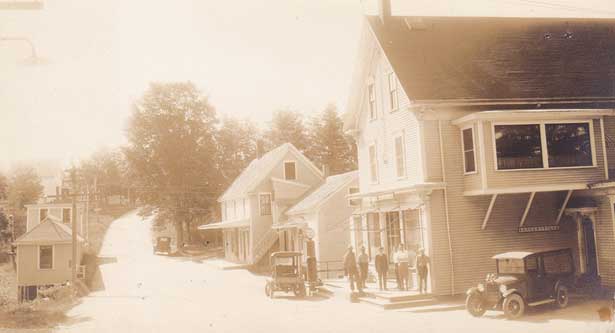
When Wyer G. Sargent died in 1900 his son Henry Wyer Sargent got the property and with his son Percy ran the Sargent businesses out of an office (behind the windows) on the second floor.
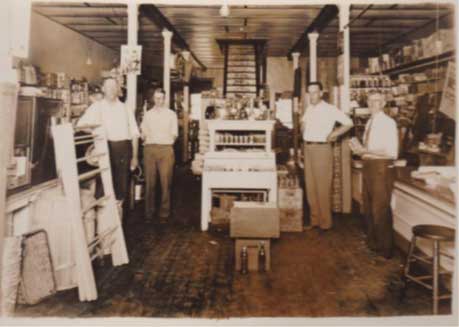
Henry Benjamin Webb, born in 1888, arrived in Sargentville around 1918 or 1919 and, shortly after that, bought Henry Sargent’s store, the business property that had housed the Wyer G. Sargent and Son Store until Wyer’s death. This is a photo of the interior of the store.
L-R Ernest Grindle, Walter Cousins, Henry Webb, Chandler Bowden
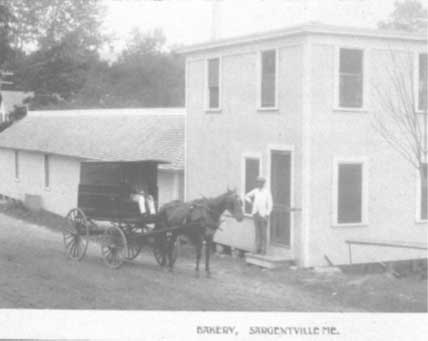
Across the road from the Sargent store, and built over the brook, was a bakery (the square shaped building) and bowling alley. The bowling alley was built by Captain Will Gower about 1901-02 and when it was no longer used as a bowling alley, George Harding had his barber shop there. The brook is still there but both buildings are gone.
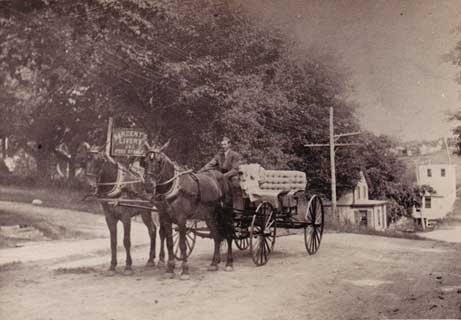
Just up the hill was the Sargent House, an inn for travelers, and the Sargent’s Livery and Feed Stable which provided transportation. In this photo, Sherman Sargent is driving one of Sargent’s fashionable carriages.
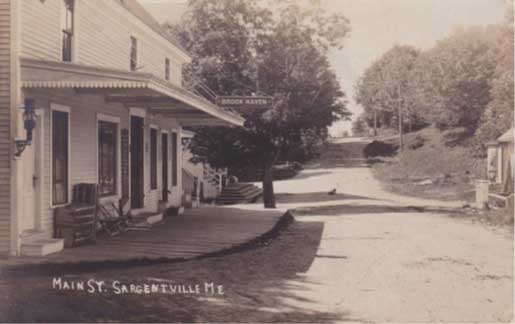
Brook Haven was a tea room that catered to locals and to visitors arriving on the steamships down at the wharf. It was later purchased by Henry Webb who ran it as a grocery store.
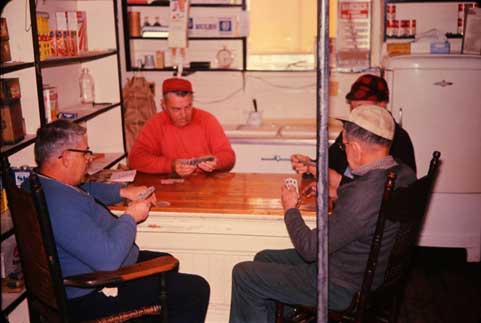
Roland (Rollie) Gray bought the Webb store and continued to run it as a general store. It was a favorite gathering place for local card players and a source of ice cream and penny candy for the children. L-R: Rollie’s son Harold Gray, Alan Leroy Webb, Norman Gray, Will Simmons
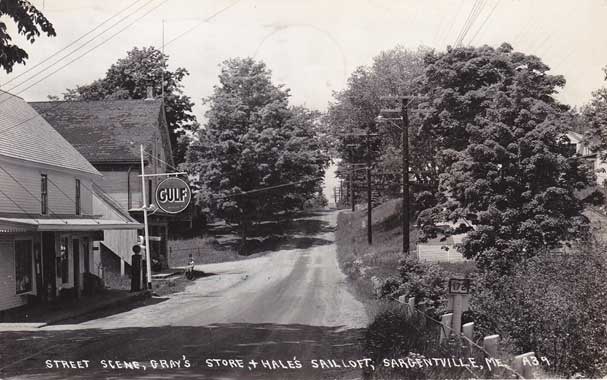
In time the Wyer G. Sargent and Son store was just a memory. Rollie Gray’s store remained, with the post office now on the left of the building. The upper floor of the building that had once housed Sargent Hall was, for many years, used as a sail loft by Clarence Hale, a talented sail maker who produced magnificent, colorful sails for both pleasure and racing boats. After the upper floors burned, the lower space was used by a flagpole company and most recently, a piano craftsman.
Rollie’s store is now a private residence and the village center is quiet but if you use your imagination you might be able to see this place as it was in the 1800s when several mail deliveries came and went each day and when beautiful horses and slow moving oxen transported people, materials and even houses along the roads. If you listened closely, perhaps you could also hear the whistle of the steamboats as they arrived at the busy Sargentville wharf, and the sound of hoof beats as the Sargents raced their carriages to the wharf to pick up travelers. It was a special time.

